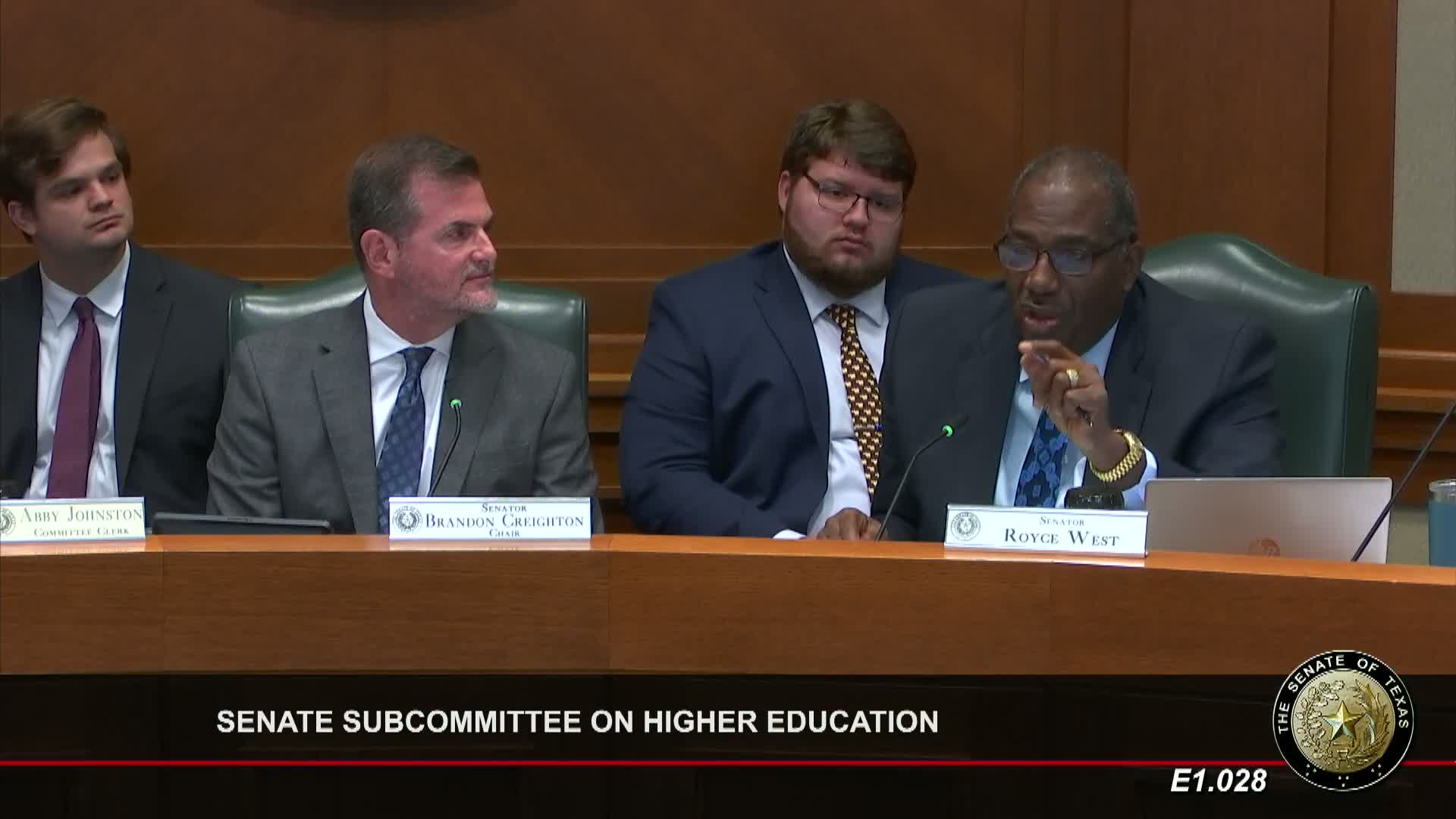Controversy Erupts Over Elimination of LGBTQ Studies Program
November 11, 2024 | Subcommittee on Higher Education, Committee on Education, Senate, Legislative, Texas
This article was created by AI summarizing key points discussed. AI makes mistakes, so for full details and context, please refer to the video of the full meeting. Please report any errors so we can fix them. Report an error »

During a recent government meeting, significant discussions took place regarding the future of various academic programs at Texas A&M University, particularly the Grama LGBTQ studies program. A recommendation was made to eliminate 52 programs, including the LGBTQ studies program. This recommendation arose from a review process that had not yet been completed. Concerns were raised by the faculty senate about their lack of involvement in the initial review, which led to a decision to pause the process and include faculty input moving forward.
The meeting also touched on the broader implications of program eliminations, especially regarding diversity and inclusion. The provost explained that the criteria for determining low-performing programs were based on enrollment numbers over the past two years. Programs with fewer than five students on average per year were flagged for review.
Questions were raised about whether political influences played a role in the decision to eliminate the LGBTQ studies program. The provost denied any political pressure, stating that no legislators had contacted him regarding the program. However, the discussion highlighted concerns about the potential cultural and workforce implications of removing such programs, especially given the presence of LGBTQ individuals in various professional fields.
Additionally, the meeting addressed the enrollment statistics of African American and Hispanic students at Texas A&M. While applications from these groups had increased, acceptance and enrollment rates remained low. The provost acknowledged the need for targeted recruitment efforts to improve these numbers, particularly for African American students, who have historically been underrepresented at the university.
The meeting concluded with a discussion on the impact of recent legislative changes, including Senate Bill 17, which restricts certain recruitment practices. The provost assured that the university would continue to seek qualified students from diverse backgrounds while adhering to legal guidelines. Overall, the discussions underscored the ongoing challenges and complexities surrounding diversity, equity, and inclusion in higher education at Texas A&M.
The meeting also touched on the broader implications of program eliminations, especially regarding diversity and inclusion. The provost explained that the criteria for determining low-performing programs were based on enrollment numbers over the past two years. Programs with fewer than five students on average per year were flagged for review.
Questions were raised about whether political influences played a role in the decision to eliminate the LGBTQ studies program. The provost denied any political pressure, stating that no legislators had contacted him regarding the program. However, the discussion highlighted concerns about the potential cultural and workforce implications of removing such programs, especially given the presence of LGBTQ individuals in various professional fields.
Additionally, the meeting addressed the enrollment statistics of African American and Hispanic students at Texas A&M. While applications from these groups had increased, acceptance and enrollment rates remained low. The provost acknowledged the need for targeted recruitment efforts to improve these numbers, particularly for African American students, who have historically been underrepresented at the university.
The meeting concluded with a discussion on the impact of recent legislative changes, including Senate Bill 17, which restricts certain recruitment practices. The provost assured that the university would continue to seek qualified students from diverse backgrounds while adhering to legal guidelines. Overall, the discussions underscored the ongoing challenges and complexities surrounding diversity, equity, and inclusion in higher education at Texas A&M.
View full meeting
This article is based on a recent meeting—watch the full video and explore the complete transcript for deeper insights into the discussion.
View full meeting
